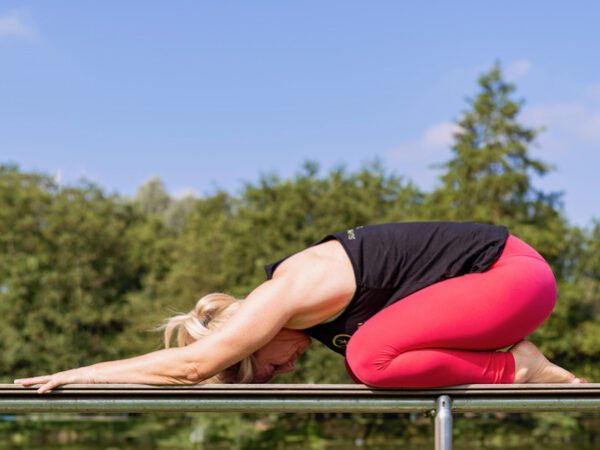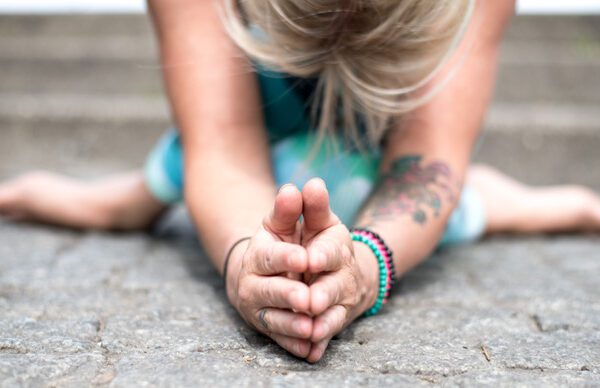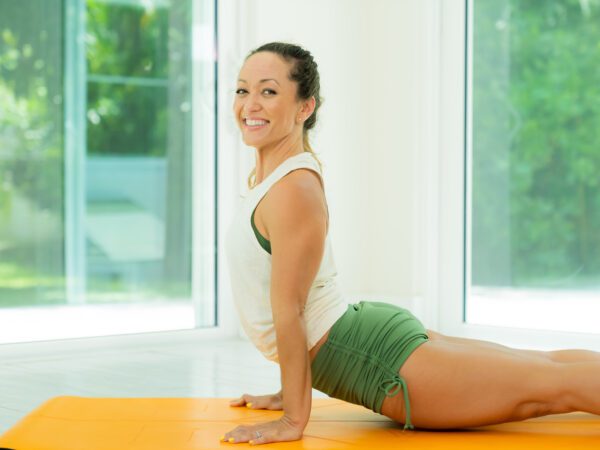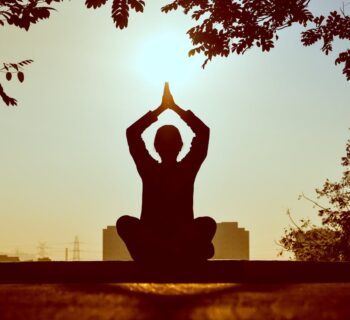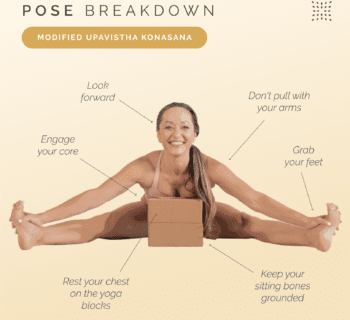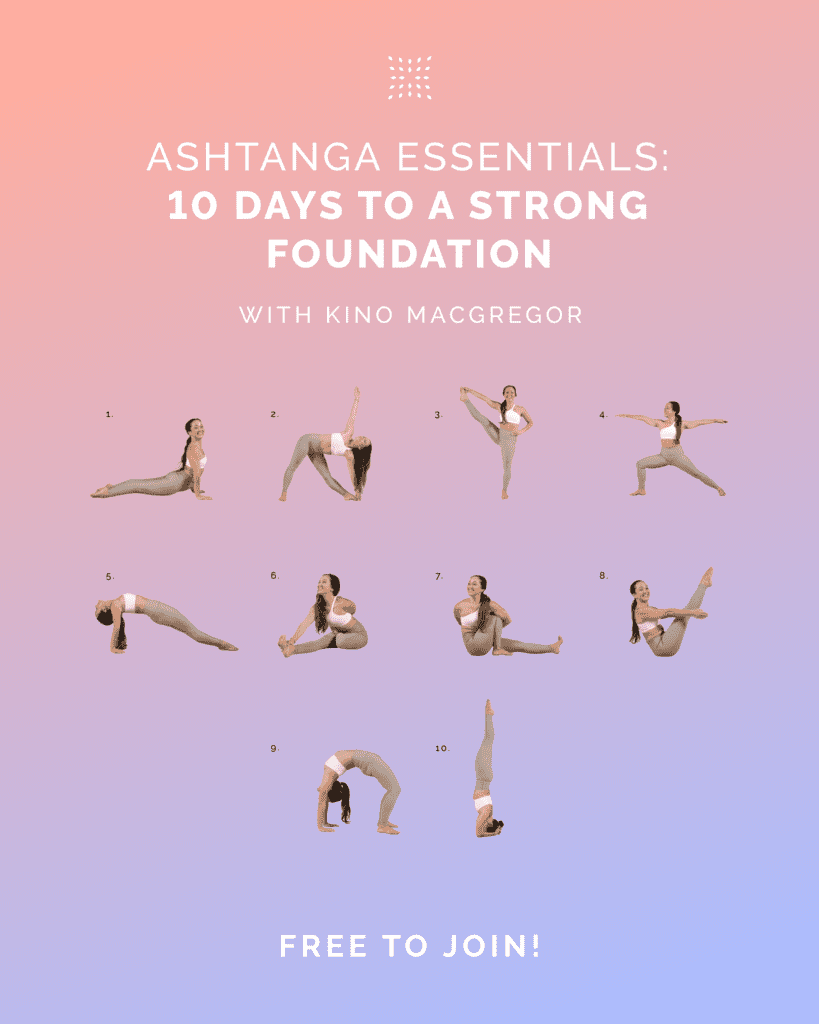Yoga, a centuries-old practice originating in ancient India, has gained immense popularity all over the world due to its numerous health benefits. If you are new to the world of yoga, you may feel overwhelmed and unsure where to start. Fear not! In this blog post, we will guide you through some foundational yoga poses that are perfect for beginners like you. These poses will help you build strength, improve flexibility, and establish a solid yoga practice.
Mountain Pose (Tadasana/Samasthiti)

Begin your yoga practice by mastering the Mountain Pose, which serves as the foundation for many other standing poses. Stand tall with your feet hip-width apart, distributing your weight evenly on both feet. Keep your spine straight, shoulders relaxed, and arms by your sides. Take deep breaths and focus on grounding yourself. This pose helps improve posture and body awareness.
Downward-Facing Dog (Adho Mukha Svanasana)

The Downward-Facing Dog is an excellent pose to stretch and strengthen your entire body. Start on your hands and knees, aligning your wrists under your shoulders and knees under your hips. Tuck your toes under and lift your hips towards the ceiling, creating an inverted V shape with your body. Press your palms firmly into the mat and relax your neck. This pose increases flexibility in your hamstrings and shoulders while energizing your body.
Child’s Pose (Balasana)

Whenever you need a moment of rest or relaxation during your yoga practice, Child’s Pose is the perfect pose to come into. Start on your hands and knees, and then sit your hips back towards your heels. Extend your arms forward and rest your forehead on the mat. Allow your whole body to relax and breathe deeply. This pose gently stretches your lower back and hips, promoting relaxation and stress relief.
Warrior I (Virabhadrasana I)

Warrior I is a powerful standing pose that helps build strength and stability. Begin by stepping your right foot forward and bending your right knee, making sure it is directly above your ankle. Extend your left leg straight back, with your heel lifted and toes pointing slightly outward. Raise your arms overhead, keeping your shoulders relaxed. This pose strengthens your legs, opens your hips, and improves balance and focus.
Warrior II (Virabhadrasana II)

Warrior II is another foundational pose that helps build strength and stamina. Start by stepping your feet wide apart, aligning your heels with each other. Turn your right foot out 90 degrees and your left foot slightly inwards. Bend your right knee, making sure it is directly above your ankle. Extend your arms out to the sides, parallel to the floor, with your palms facing down. Gaze over your right hand. This pose strengthens your legs, stretches your hips and chest, and improves concentration.
Bridge Pose (Setu Bandhasana)

Bridge Pose is great for strengthening your back, glutes, and hamstrings. Lie on your back with your knees bent and feet hip-width apart. Place your arms alongside your body, palms facing down. Press your feet into the mat and lift your hips off the ground, forming a bridge shape with your body. Engage your glutes and thighs while keeping your neck and shoulders relaxed. This pose helps relieve back pain and improves spinal flexibility.
Tree Pose (Vrksasana)

Tree Pose, or Vrksasana, is a balancing pose that helps improve stability and focus. Begin by standing tall with your arms at your sides. Shift your weight onto your left foot and slowly lift your right foot off the ground. Place the sole of your right foot on the inner left thigh, with your toes pointing towards the floor. Bring your hands together at your heart center, or extend your arms overhead. Find a steady gaze point and breathe deeply. This pose strengthens your legs, improves balance, and promotes a sense of grounding and connection to the earth.
Triangle Pose (Trikonasana)

Triangle Pose, or Trikonasana, is a standing pose that helps stretch and strengthen the entire body. Start by standing with your feet wide apart, approximately 3-4 feet. Turn your right foot out 90 degrees and your left foot slightly inwards. Extend your arms out to the sides, parallel to the floor, with your palms facing down. Bend your right knee, making sure it is directly above your ankle. Keep your left leg straight and engage your core. Reach your right hand towards the floor, either placing it on your right shin, ankle, or the floor, and extend your left arm towards the ceiling. Gaze towards your left hand. This pose helps improve flexibility in the hips and hamstrings, strengthens the legs, and stretches the torso and spine.
Cobra Pose (Bhujangasana)

Cobra Pose, or Bhujangasana, is a gentle backbend that helps strengthen the spine and open the chest. Start by lying flat on your stomach with your legs extended and the tops of your feet resting on the mat. Place your hands on the mat, directly under your shoulders, with your fingertips pointing forward. Press your palms firmly into the mat and engage your core muscles. Slowly lift your chest off the ground, using the strength of your back muscles, while keeping your hips and legs grounded. Be mindful not to strain your neck, and keep your gaze forward or slightly upward. This pose helps improve posture, relieve tension in the back, and increase overall spinal flexibility.
Standing Forward Bend (Uttanasana)

Standing Forward Bend, or Uttanasana, is a gentle forward fold that helps stretch the hamstrings, calves, and spine. Start by standing tall with your feet hip-width apart. Take a deep breath in, and as you exhale, hinge at the hips and fold forward, reaching your hands towards the ground or resting them on your shins or thighs. Allow your head and neck to relax, and let gravity pull your upper body toward the floor. If you have tight hamstrings, you can bend your knees slightly to ease the stretch. This pose helps relieve stress and tension in the back, promotes relaxation, and improves flexibility in the lower body.
Corpse pose (Savasana)
Corpse Pose, or Savasana, is a relaxation pose that is often done at the end of a yoga session. It involves lying on your back with your legs extended and your arms by your sides. Close your eyes and focus on your breath, allowing your body to completely relax into the mat. This pose helps reduce stress and anxiety, promotes relaxation, and allows for integration and reflection after a yoga practice. It is a great pose for beginners to end their practice and find a sense of calm and stillness.
Try practicing with this short video for more instruction on how to do some of the poses in this post.
As a beginner, it’s important to start with foundational yoga poses that focus on building strength, improving flexibility, and establishing a solid practice. The poses mentioned above are perfect for people just starting out in their yoga journey. Downward-Facing Dog, Child’s Pose, Warrior I, and Bridge Pose all offer various benefits and can be easily incorporated into a beginner’s practice. Remember to listen to your body and modify the poses as needed. With consistent practice, you will gradually build strength, increase flexibility, and experience the many physical and mental benefits of yoga. Enjoy the journey and embrace the transformative power of yoga!
Are you looking for more guidance on your yoga journey? Sign up for Omstars to get access to thousands of yoga classes in the comfort of your own home. Click here to start your subscription.
Photo by Zen Bear Yoga on Unsplash



